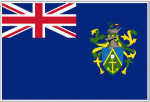- 0 replies
- 1,324 views
- Add Reply
- 2 replies
- 1,508 views
- Add Reply
- 5 replies
- 6,267 views
- Add Reply
- 2 replies
- 2,794 views
- Add Reply
- 4 replies
- 1,426 views
- Add Reply
MapSocial (Beta) Real Time Mapping In Facebook

By Lurker,


I found interesting application for Facebook, called Mapsocial
The application is still in Beta, however, you are invited to jump in and create your own maps, share them with friends, and invite others to contribute. Perhaps the first truly integrated mapping platform for facebook, the app is a great collaboration tool enabling teams to build a map or providing a clever way to take someone on a tour with you. To get started simply create a new map, you can then define the map parameters li
RIP ENVISAT

By Lurker,
From their websites :
ESA declares end of mission for Envisat
So for people who don't know bout ENVISAT :
Envisat was ESA's successor to ERS. Envisat was launched in 2002 with 10 instruments aboard and at eight tons is the largest civilian Earth observation mission.
More advanced imaging radar, radar altimeter and temperature-measuring radiometer instruments extend ERS data sets. This is supplemented by new instruments including a medium-resolution spectrometer sensitive to both land
RandomForest

By hariasa,
Hi,
Does anyone know how to perform a RandomForest classification? Or which programs support it? Are there example scripts for R? Or plugins for ERDAS, ENVI or something?
I use shapefiles for training areas and tif files for the actual data to be classified.
All help would be awesome.
Thanks,
-hariasa
arcgis raster calculator error
By Alexey,
Hi,
I'm new to this board so i dont really know if im right in this thread or if you need more information.
I have to classify a rasterlayer of rivers. So i use the Raster Calculator with the code:
Con("riverclass1", 2,"riverclass1","(Value >= 40000) & (Value < 300000)")
But it gives me the Error: invalid sql statement used.
I only learned java so i dont really know the python syntax. So is the Syntax wrong or some other stuff broke?
Thank you
Hot Spot, cluster or density ??????
By Svenne68,
Hi there
I need to make a simple analyse like a hot spot, clustering or density. The point is to have, let us say.......250 random point on a map......5 x attributes row with random numbers from 1-5.
Then i need to find some kind of clustering or hotspots to where there are most with one's or with a summary under 9.
I do not wish just to do it with "select by attributes", but more like a kind of "crime analysis"...but SIMPLE...anyone?
-
Forum Statistics
8.8k
Total Topics43.5k
Total Posts



